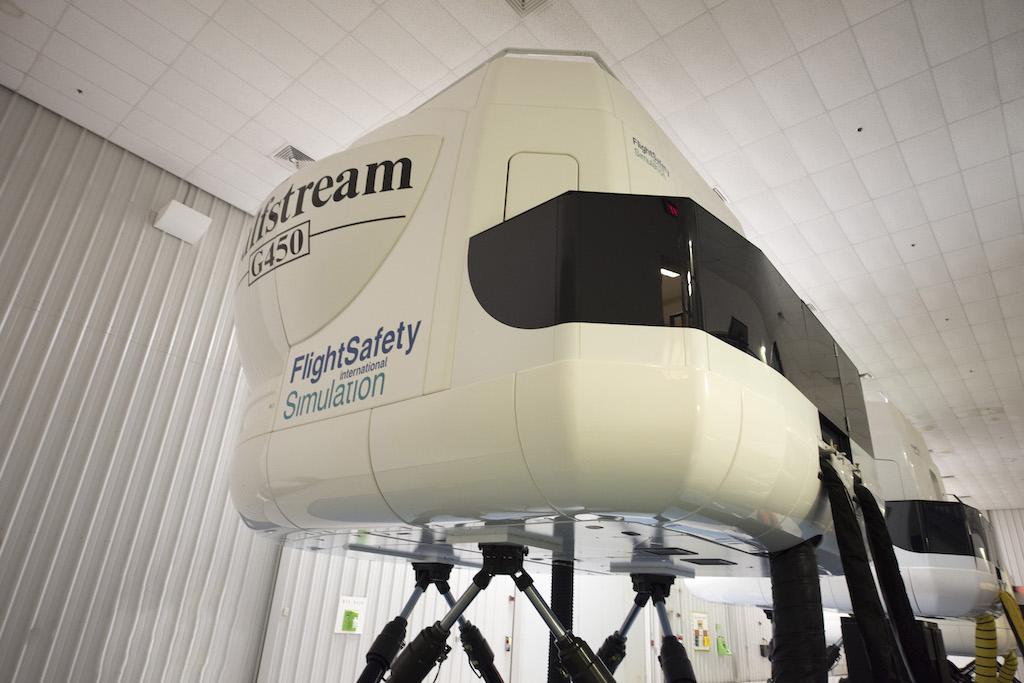
In Part 1, we discussed how to introduce the new hire to your flight department.
It is only natural for a new hire to be nervous about an upcoming training event. “Will it be harder than anything I’ve done before?” “What if I don’t pass the check ride?” You want the new hire to excel, of course. But what can you do now, before training?
Most of us make lousy ambassadors for the training process. We tend to over-or under-state the difficulty, or our memories give totally inaccurate advice. I’ve gone through this new aircraft training process many times, and I think the advice I was given was appropriate three or four times at most. Here are some examples of the worst advice:
- "It was the toughest check ride of my career,”I was once told before going to initial training. “I felt lucky to pass. Don’t feel bad if you don’t pass, most of us don’t.” That was not what I wanted to hear! And it wasn’t true.
- "Make sure you visit local restaurants,” I heard for another initial.“It would be a shame to miss out on all that excellent food. School is easy; they will teach you the check ride.” That was bad advice.
- “There’s no way to prepare, so why even bother? They give you all the study materials on the first day, so you know they don’t expect you to waste your time before class.” This vendor did indeed train the check ride, but showing up more prepared would have made me more able to separate the wheat from the chaff spewed by the person wearing the instructor name tag.
Moreover, training experiences are often eclipsed by actual flying experiences and many people simply “flush” the earlier memories. If they offer any advice at all, it may be dated and no longer applicable.
Having been a victim of this kind of bad advice over the years, I have tried to analyze the motivation of the advice givers. I think some were well-intentioned and thought minimizing the challenge would set my mind at ease. (It had the opposite effect.) I know that some barely passed because they were poorly prepared and, I suspect, wanted me to experience what they had endured. No matter the motivation, bad advice is poisonous and can set your new hire up for failure.
The best way to set up your new hire for a positive training experience is to learn from the most-recent graduate. I like to sit down with returning trainees twice, once before they start flying the line and again after a month or so of line experience.
An interview immediately upon return and before the new hire starts line flying ensures the answers are fresh and not impacted by the inevitable learning process that happens “out there” in the real world.
- Did your classroom time prepare you well for the written and oral exams? Which questions gave you the most trouble? Try to recall them as best as you can.
- Are any of the aircraft systems or flight procedures unusual compared to what you’ve flown in the past? How so?
- Did the task trainers and simulators prepare you well for the flight check? Recall the check ride scenario as best as you can, with an eye toward helping the next pilot we send.
- Who were your instructors, and did they adequately train you given the amount of time, or did they waste your time?
- Which study guides or other reference materials did you find especially helpful? How can we adopt them for our use in-house?
- Did the training prepare you for written, oral or flight evaluations? How could the training have been better and how can we make up for these deficiencies for the next person we send?
After the new hire has flown a few trips and is showing signs of getting comfortable, but no more than two months after training, it is time for another interview.
- Based on what you’ve seen so far, which normal flight procedures didn’t get enough attention? How could they have made your transition to flying the line with us smoother?
- Did you feel “behind the power curve” when dealing with any aircraft systems flying the line because they weren’t covered with enough detail (or at all) in school?
- Let’s go through a normal flight from exterior preflight inspection all the way to securing the aircraft from flight. (Use the appropriate checklists.) For each, what do we do on the line that should have been covered with more detail during training?
- Do you have any advice for the next new hire?
Getting The New Pilot Up To SOP Speed After Initial Training

Many aviators are comfortable with standard operating procedures (SOPs) and expect them in all phases of any quality flight organization. Many, but not all.
Some, in fact, are openly hostile to the idea that someone else will have anything to say on how they fly their aircraft. With these pilots, it may take a while for their true nature to come out, but it will come out. That can be poison for your organization. An “SOP denier” has two possible courses in your organization: they can be converted early or not at all.
If your crews tend to fly without any standardization, an early push for the new hire to adopt SOPs will not last long. Even if all the other pilots do faithfully enforce your organization’s SOPs, if they don’t teach them, the new hire may see them as optional. Finally, if the new hire hasn’t been exposed to a rigid set of SOPs before, they will be tempted to give them up unless they are consistently and regularly used by everyone.
The new hire needs to understand why SOPs are vital in order to fully embrace them. When flying with multiple crews, it is important that everyone understands what “normal” operations look like so they can better identify when things are not normal.
This is even more important when flying with only one other pilot; two pilots who fly exclusively together can go down the path of procedural intentional noncompliance without even knowing it.
The boss should let the new hire know that SOPs can and should change over time but that these changes happen in a thoughtful and well-considered manner. I’ve given this speech so many times that I have it memorized.
“You come to us with a lot of experience, and we are looking forward to hearing what you think about how we do things around here. We rely on everyone flying by the book, as defined by the AFM and the many regulations that spell out what must be done. We also embrace a lot of technique that makes everything easier and more predictable. But we standardize those techniques to increase the amount of backup everyone provides to everyone else. It could be that you have a better way of doing things. Please hold your fire and see how we do it first. Then, after seeing that, come see me and let me know how we can do it better. We’ve adopted many new SOPs, in fact the last one was…” (And provide that example.)
In Part 3, we’ll discuss motivating your new hire to excel and your other employees to help.





